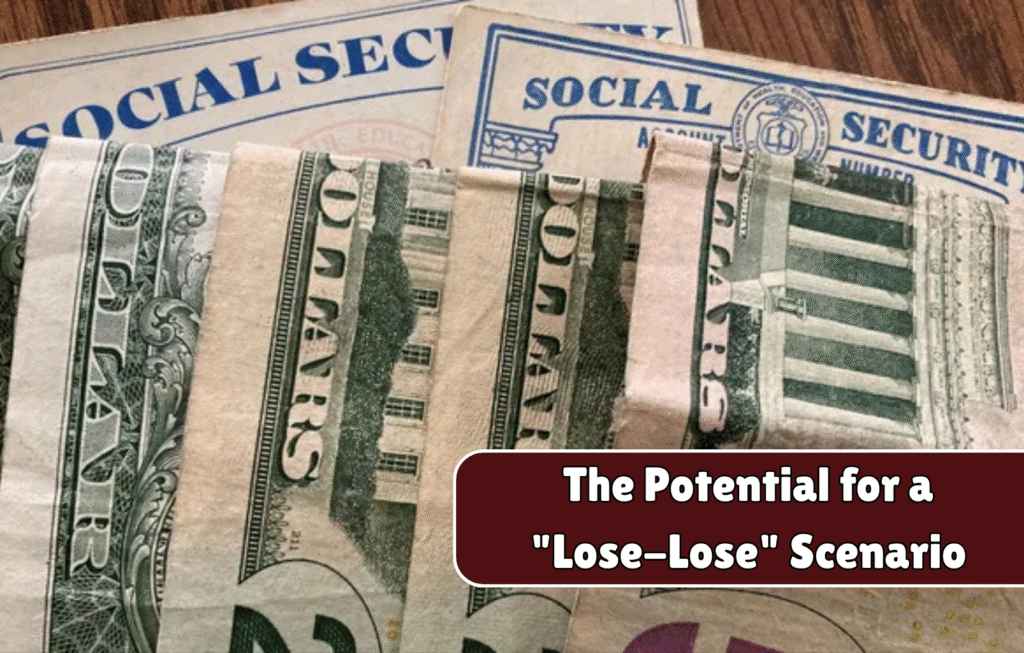The Dreaded Lose-Lose Scenario Is a Near-Certainty With Social Security’s 2026 Cost-of-Living Adjustment (COLA)
As we approach the end of 2025, Social Security beneficiaries are bracing for the 2026 Cost-of-Living Adjustment (COLA), which is projected to be the lowest in recent years. While any increase is welcomed, the anticipated COLA may not keep pace with the rising costs of essential expenses, leading to a potential “lose-lose” situation for many recipients.
Understanding the 2026 COLA Projection
Based on current estimates, the 2026 COLA is projected to be between 2.4% and 2.5%. This follows a 2.5% increase in 2025. However, this projected increase is significantly lower than the 5.9% COLA in 2022 and the 8.7% in 2023, both of which were driven by pandemic-related inflation spikes. The lower COLA reflects a return to more typical inflation levels, but it may not be sufficient to offset the rising costs of goods and services that seniors rely on.
The Impact of Inflation on Seniors

While the official COLA is calculated using the Consumer Price Index for Urban Wage Earners and Clerical Workers (CPI-W), this index may not accurately reflect the spending patterns of retirees. Retirees often spend a higher proportion of their income on healthcare and housing, both of which have experienced inflation rates higher than the general CPI-W.
For instance, the Senior Citizens League reports that from 2000 to 2023, the purchasing power of a Social Security dollar dropped by 36%, and by 20% between 2010 and 2024. This indicates that the COLA adjustments have not kept pace with the actual cost increases faced by seniors.
Medicare Part B Premiums: An Additional Burden
Adding to the financial strain, Medicare Part B premiums are projected to increase by 11.6% in 2026, reaching approximately $206 per month. This increase is significantly higher than the projected COLA, potentially offsetting the benefits of the adjustment. For example, if a retiree receives an additional $50 per month from the COLA but faces a $22 increase in Medicare premiums, the net gain is reduced to $28, effectively diminishing the intended benefit.
The Potential for a “Lose-Lose” Scenario

The combination of a modest COLA increase and rising Medicare premiums creates a scenario where many Social Security beneficiaries may find their net income effectively unchanged or even reduced. This situation is exacerbated for those who rely heavily on Social Security as their primary source of income. Without other sources of income or savings, these individuals may struggle to meet their basic needs, leading to a “lose-lose” scenario where the COLA adjustment does not provide the anticipated relief.
Looking Ahead: The Importance of Financial Planning
Given the challenges posed by the projected 2026 COLA and rising healthcare costs, it’s crucial for Social Security beneficiaries to engage in proactive financial planning. This includes budgeting for increased expenses, exploring additional sources of income, and considering adjustments to spending habits. Additionally, staying informed about policy changes and advocating for more accurate cost-of-living adjustments that reflect the actual expenses of retirees can help ensure that Social Security remains a viable source of support for seniors.
Conclusion
While the 2026 COLA provides a modest increase in Social Security benefits, it may not be sufficient to offset the rising costs of essential services like healthcare and housing. This discrepancy underscores the need for a more accurate reflection of retirees’ spending patterns in the COLA calculation. In the meantime, beneficiaries must navigate these financial challenges through careful planning and resource management to mitigate the impact of the projected “lose-lose” scenario.
FAQs
Q1: What is the projected 2026 Social Security COLA?
The 2026 COLA is estimated at 2.4%–2.5%, lower than recent spikes but reflecting typical inflation, possibly insufficient to cover seniors’ rising living expenses.
Q2: Why might the COLA not fully help retirees?
COLA is based on CPI-W, which underrepresents retirees’ higher costs for healthcare and housing, causing adjustments to lag behind actual senior living expenses.
Q3: How does inflation affect Social Security purchasing power?
Since 2000, Social Security’s purchasing power dropped 36%, and 20% since 2010, meaning benefit increases often don’t keep pace with seniors’ real cost-of-living rises.
